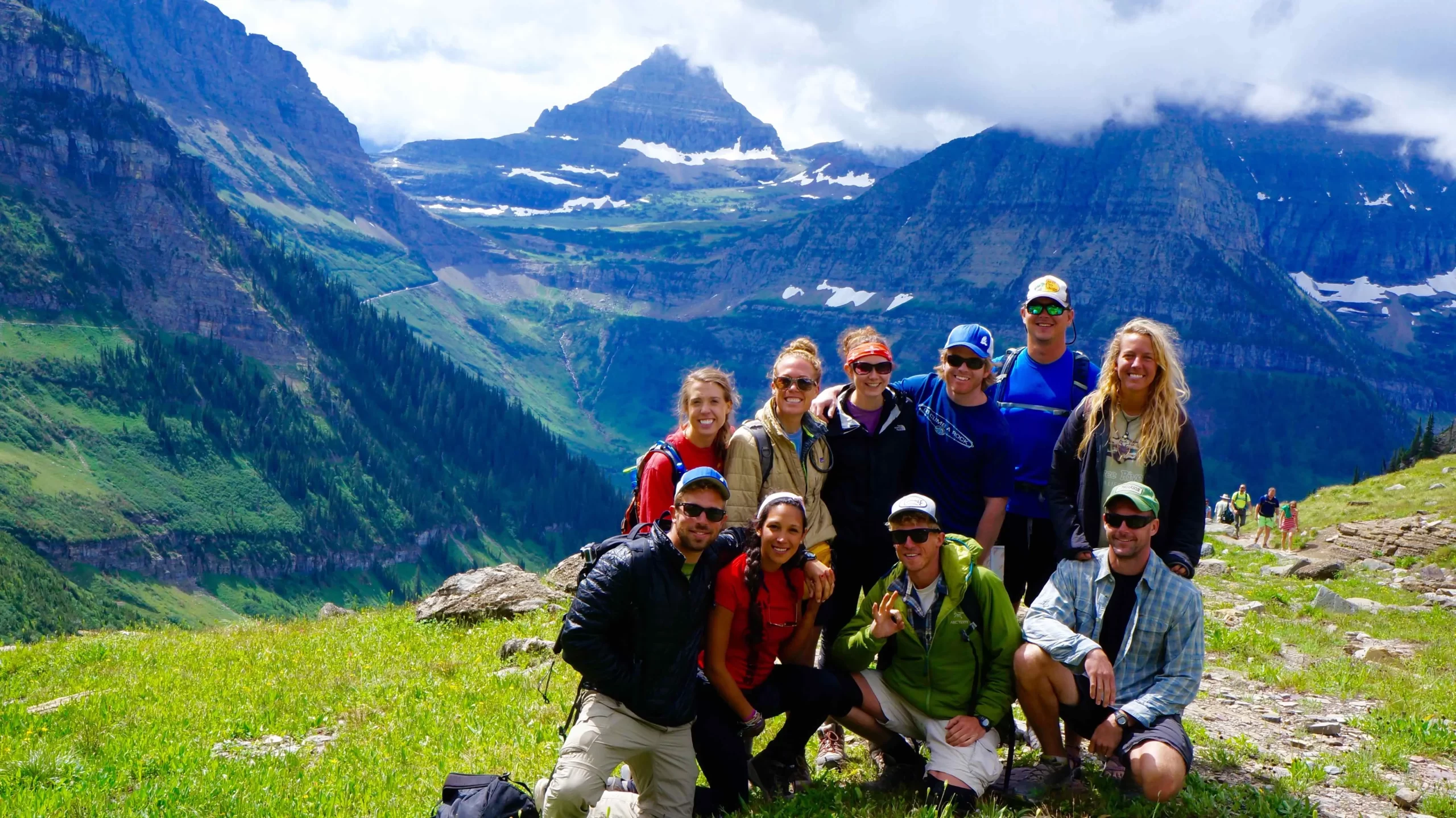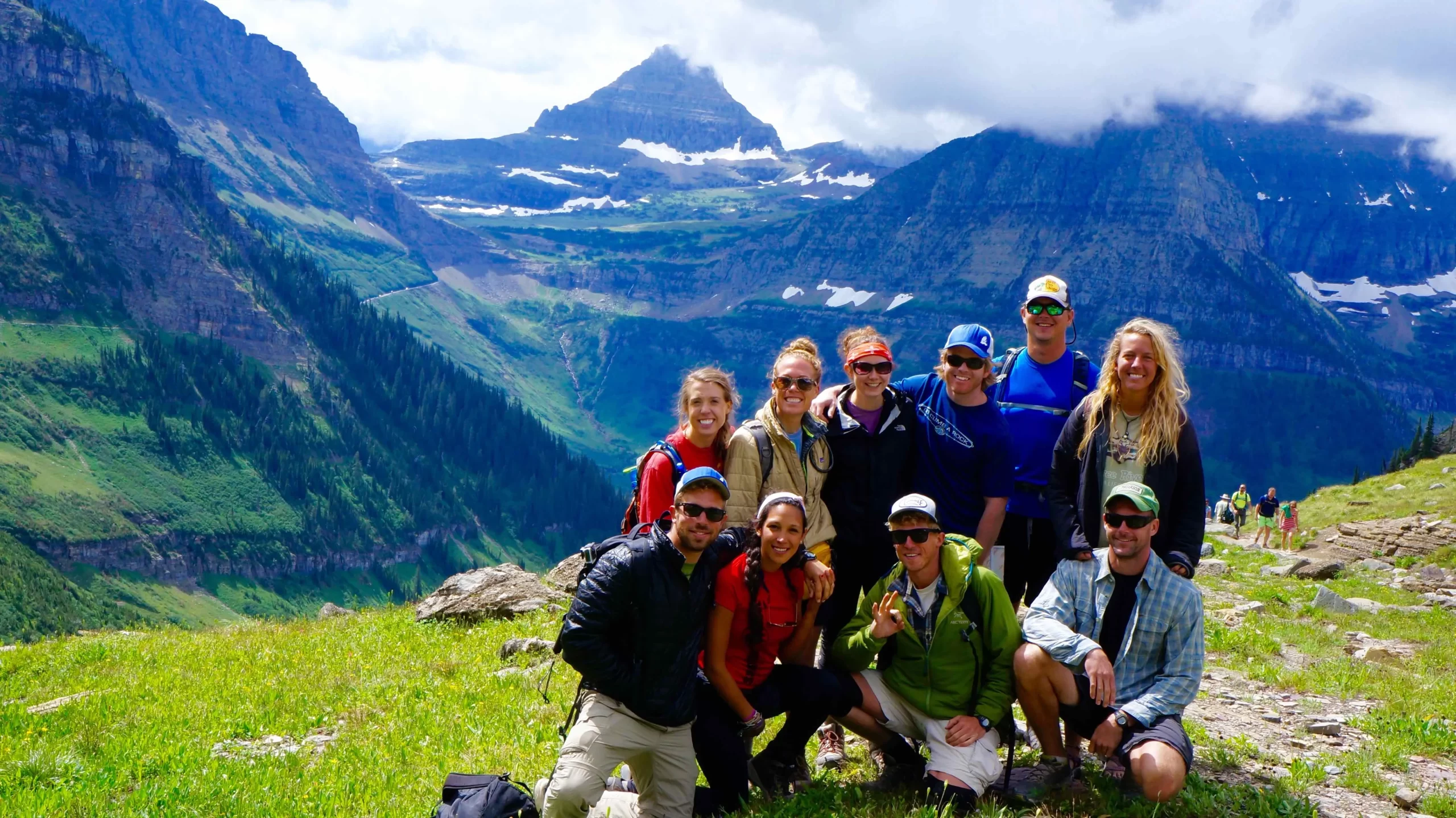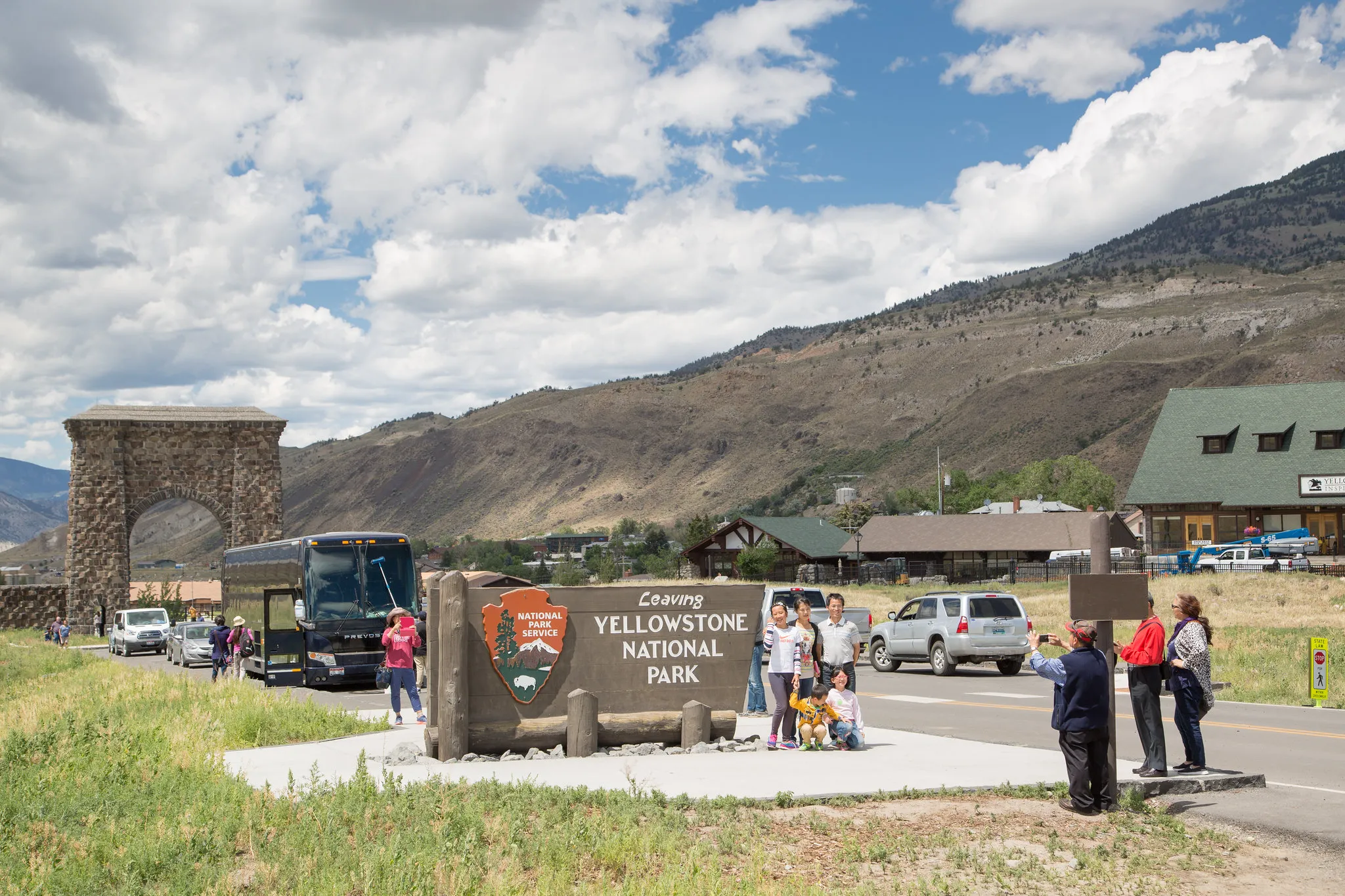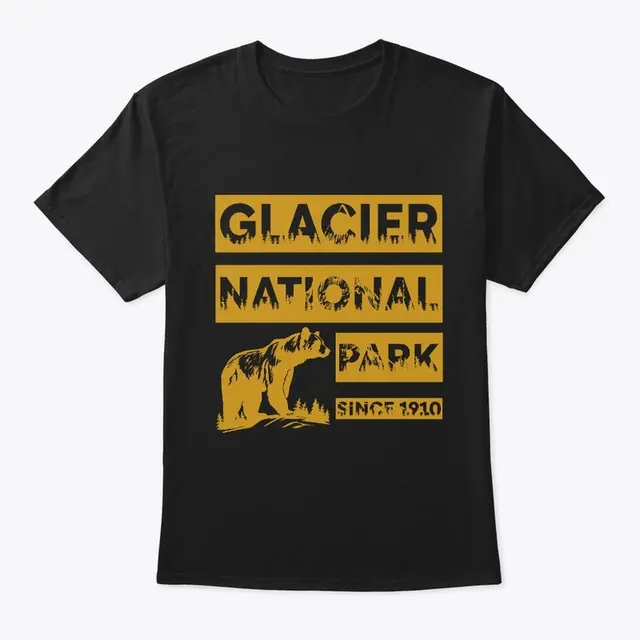
Glacier and Yellowstone National Parks Experience Visitor Surge in 2024: Complete Guide and Essential Gear
Both Glacier and Yellowstone National Parks experience visitor surge in 2024, with record-breaking numbers that have transformed the visitor experience at these iconic destinations. As someone who has witnessed firsthand the incredible transformation of America's national parks, I'm excited to share comprehensive insights about navigating these crowds while maximizing your adventure. For more expert outdoor content, visit Nature Guests.
Record-Breaking Visitor Statistics 2024

The phenomenon where Glacier and Yellowstone National Parks experience visitor surge in 2024 has shattered previous records, creating both unprecedented opportunities and challenges for outdoor enthusiasts. Glacier National Park welcomed over 600,000 visitors in September 2024 alone, representing a staggering 9% increase from the previous year. This surge pushed the park's annual total to 3.2 million visitors, marking only the fourth time in history that Glacier has exceeded the 3 million visitor threshold.
According to National Park Service data, the surge began accelerating after the pandemic, with 2021 setting the initial record that 2024 is now approaching. The elimination of vehicle reservation systems at certain entry points, particularly at Glacier's St. Mary Entrance, contributed significantly to these increased numbers. Park officials note that the West Entrance and St. Mary Entrance recorded their highest visitor counts in over 26 years.
Key Statistics:
- Glacier: 3.2+ million visitors (9% increase)
- Yellowstone: 4.74 million visitors (5.4% increase)
- Combined economic impact: $716+ million
- Peak month: September 2024
Understanding the Visitor Surge Causes
Several interconnected factors explain why Glacier and Yellowstone National Parks experience visitor surge in 2024. The post-pandemic travel boom represents the primary driver, as Americans prioritize outdoor experiences and domestic travel over international destinations. This shift in travel preferences, combined with increased social media exposure of national park landscapes, has created unprecedented demand for these natural wonders.
Policy Changes and Accessibility
Glacier's decision to modify its vehicle reservation system played a crucial role in the surge. The park removed the St. Mary Entrance from the reservation requirement and relocated the Going-to-the-Sun Road checkpoint to the Apgar Visitor Center. These changes allowed more spontaneous visits, particularly benefiting local tourism businesses that had struggled with the restrictive reservation system.
The economic recovery following COVID-19 restrictions also contributed significantly. With Americans earning more disposable income and seeking meaningful experiences, national parks became prime destinations. The "revenge travel" phenomenon, where people compensate for missed travel during lockdowns, specifically targeted outdoor destinations like Yellowstone and Glacier.
Social Media and Digital Influence
Instagram and TikTok influencers have dramatically increased park visibility, with hashtags like #GlacierNationalPark and #Yellowstone generating millions of views. This digital exposure creates viral moments that drive visitation spikes, particularly among younger demographics seeking photogenic experiences. The phenomenon mirrors trends seen in other outdoor destinations where social media directly correlates with visitor increases.
Contributing Factors:
- Post-pandemic outdoor recreation boom
- Relaxed vehicle reservation requirements
- Social media influence and viral content
- Economic recovery and increased travel budgets
- Climate change urgency driving "last chance" tourism
My Personal Experience Navigating the Crowds

Having visited both parks during the peak surge months, I can personally attest to how dramatically Glacier and Yellowstone National Parks experience visitor surge in 2024 has transformed the visitor experience. My July visit to Glacier required arriving at Logan Pass by 6:30 AM to secure parking, compared to the 8:00 AM arrivals that worked perfectly fine in previous years.
At Yellowstone, the crowds around Old Faithful were unlike anything I'd experienced in fifteen years of park visits. The viewing area, typically accommodating visitors comfortably, was packed three rows deep twenty minutes before eruption times. However, I discovered that lesser-known features like the Fairy Falls trail offered solitude just minutes away from the congested Grand Prismatic area.
Lessons Learned from Peak Season Visits
The most valuable lesson from my 2024 visits was the importance of flexibility and alternative planning. When the popular Highline Trail at Glacier was completely full by 7 AM, I pivoted to the equally stunning but less crowded Avalanche Lake trail. This experience taught me that successful navigation of current park conditions requires multiple backup plans and willingness to explore beyond social media hotspots.
Rangers consistently provided excellent advice about crowd patterns and alternative experiences. At Yellowstone, a ranger suggested visiting the Norris Geyser Basin during peak Old Faithful hours, resulting in an intimate experience with some of the park's most unique thermal features. These interactions reinforced the value of engaging with park staff who understand real-time conditions.
Personal Tips from Experience:
- Arrive at popular destinations before 7 AM
- Maintain flexible itineraries with backup plans
- Engage with rangers for real-time crowd intelligence
- Explore lesser-known trails during peak hours
- Consider weekday visits over weekends when possible
Essential Gear for Crowded National Parks
When Glacier and Yellowstone National Parks experience visitor surge in 2024, having the right equipment becomes crucial for both safety and comfort. Crowded conditions require different preparation strategies compared to typical park visits, emphasizing portable, reliable gear that performs well in high-traffic environments.

Maelstrom 40L Hiking Backpack
Perfect for day hikes in crowded national parks with waterproof protection and rain cover.

SABRE Frontiersman Bear Spray
Essential safety equipment for both Glacier and Yellowstone with 40ft range and EPA registration.
Hydration and Navigation Essentials
Crowded park conditions often mean longer waits and limited access to facilities. A quality hydration system becomes essential, particularly during peak summer months when temperatures soar and water sources may be crowded or temporarily unavailable.

TETON 65L Scout
Internal frame backpack for extended park adventures with rain cover.
User Reviews Summary:
Sarah M. (Amazon): "The Maelstrom backpack was perfect for our Glacier trip. Lightweight but held everything we needed for day hikes, and the rain cover saved us during a sudden storm at Logan Pass."
Mike R. (Reddit): "Bear spray is absolutely essential. Used SABRE at Yellowstone and felt confident on all trails. The 40ft range gives peace of mind in crowded areas where bears might be stressed."
Lisa K. (Quora): "The hydration pack was a game-changer during busy park days. No need to find water fountains or carry multiple bottles when you're dealing with crowds and limited facilities."
For comprehensive gear recommendations beyond what's covered here, check out our detailed backpacking gear list that includes crowd-specific considerations. Additionally, for winter visits during the surge, our guide to insulated tents for winter provides essential cold-weather preparation advice.
Economic Impact and Local Communities
The reality that Glacier and Yellowstone National Parks experience visitor surge in 2024 extends far beyond park boundaries, creating significant economic ripple effects throughout Montana and Wyoming. According to National Park Service economic impact studies, the parks generated over $716 million in visitor spending within local gateway communities during 2024, representing a substantial increase from previous years.
This economic surge supports approximately 10,900 jobs across Montana alone, with positions ranging from hospitality and retail to specialized outdoor guiding services. Local businesses in gateway communities like West Yellowstone, Whitefish, and Gardiner report unprecedented demand for accommodations, dining, and recreational services. However, this growth also presents challenges including workforce shortages, infrastructure strain, and affordability concerns for local residents.
Community Benefits and Challenges
Restaurant owners in Whitefish describe 2024 as their busiest year on record, with many establishments struggling to meet demand despite extended hours and additional staffing. Similarly, accommodation providers report booking rates exceeding 95% throughout traditional peak months, with many properties expanding capacity through glamping and RV facilities.
The economic benefits extend to unexpected sectors, including outdoor gear retailers, photography services, and even healthcare facilities experiencing increased visitor-related incidents. However, local infrastructure faces unprecedented strain, with some communities implementing visitor management strategies to balance economic benefits with resident quality of life.
Economic Benefits
- $716+ million in local spending
- 10,900+ jobs supported
- Increased tax revenue for communities
- Business expansion opportunities
- Infrastructure investment stimulus
Community Challenges
- Workforce housing shortages
- Traffic congestion and parking issues
- Strained public services
- Environmental impact concerns
- Cost of living increases
Expert Insights: Managing National Park Crowds
Watch this comprehensive guide on navigating crowded national parks and making the most of your visit during peak season.
Tips for Visiting During Peak Season
Successfully navigating periods when Glacier and Yellowstone National Parks experience visitor surge in 2024 requires strategic planning and flexible expectations. Based on extensive research and personal experience, certain approaches significantly improve visitor satisfaction despite crowded conditions.
Timing and Scheduling Strategies
The most effective strategy involves arriving at popular destinations before 7:00 AM, when parking availability remains optimal and wildlife activity peaks. This early arrival window, while requiring sacrifice of sleep, consistently provides the most rewarding experiences with dramatically reduced crowds. Alternatively, visiting popular sites after 6:00 PM captures beautiful evening light while avoiding peak midday congestion.
Weekday visits offer substantial advantages over weekend trips, with Tuesday through Thursday showing the lowest visitor density. This timing particularly benefits those with flexible schedules, as it can transform a frustrating crowded experience into a manageable and enjoyable adventure. Planning visits during shoulder seasons (late September or early June) provides optimal weather with reduced crowds, though some facilities may have limited hours.
Alternative Destinations and Hidden Gems
Both parks offer incredible alternatives to overcrowded hotspots that provide equally spectacular experiences. At Glacier, the Two Medicine area offers stunning mountain scenery with fraction of Going-to-the-Sun Road crowds. Similarly, Yellowstone's Norris Geyser Basin provides unique thermal features without Old Faithful's masses. These alternatives require slightly more research but reward visitors with intimate park experiences.
Crowd-Beating Strategies:
Glacier National Park:
- Visit Two Medicine instead of Logan Pass
- Hike Avalanche Lake early morning
- Explore North Fork area for solitude
- Use Polebridge entrance for backcountry access
Yellowstone National Park:
- Choose Norris over Grand Prismatic during peak hours
- Visit Lamar Valley for wildlife viewing
- Explore Hayden Valley alternatives
- Hike less popular thermal features
For those interested in experiencing unique park events, our coverage of Fat Bear Week 2024 provides insights into seasonal park programming that attracts different crowd dynamics. Additionally, visitors seeking aquatic alternatives might consider our guide to Biscayne National Park snorkeling for a completely different national park experience.
Ready to Tackle the Crowds?
Don't let visitor surges diminish your national park adventure. With proper preparation and the right gear, you can create unforgettable memories even during peak season.
Conclusion

The phenomenon where Glacier and Yellowstone National Parks experience visitor surge in 2024 represents both challenge and opportunity for outdoor enthusiasts. While record-breaking crowds have transformed the traditional park experience, they also demonstrate America's renewed appreciation for natural spaces and outdoor recreation. Understanding these dynamics empowers visitors to navigate crowds successfully while supporting the economic vitality of gateway communities.
Successfully experiencing these parks during peak periods requires preparation, flexibility, and realistic expectations. The strategies outlined throughout this guide—from early morning arrivals to alternative destination selection—consistently provide positive outcomes for prepared visitors. Essential gear investments, particularly quality backpacks and safety equipment, significantly enhance both comfort and security during crowded conditions.
Looking ahead, the surge trend appears likely to continue as national parks become increasingly central to American recreation preferences. This reality emphasizes the importance of sustainable visitation practices and community-conscious tourism approaches. By supporting local businesses, respecting park resources, and engaging with conservation efforts, visitors contribute to long-term preservation of these incredible landscapes.
The economic impact extending beyond park boundaries—$716 million in local spending and over 10,900 supported jobs—demonstrates how outdoor recreation drives regional prosperity. However, balancing growth with sustainability remains crucial for maintaining both environmental integrity and community character in gateway areas.
Key Takeaways:
- Strategic timing and preparation enable successful visits despite crowds
- Quality gear investments significantly improve comfort and safety
- Alternative destinations provide exceptional experiences with fewer visitors
- Economic benefits support local communities while creating sustainability challenges
- Future planning should account for continued high visitation levels
Frequently Asked Questions
What are the best months to visit Glacier and Yellowstone to avoid crowds in 2024?
The optimal months for reduced crowds are late September through early October and late May through early June. September offers excellent weather with dramatically fewer visitors after Labor Day, while late spring provides wildflower blooms and active wildlife with manageable crowd levels. Winter visits (December-March) offer the smallest crowds but require specialized gear and limit access to many park areas. Avoid July and August entirely if crowd avoidance is your primary concern, as these months consistently show peak visitation numbers.
How early should I arrive at popular attractions during the visitor surge?
Arrive at major destinations by 6:30-7:00 AM for optimal parking and viewing conditions. Logan Pass at Glacier typically fills by 8:00 AM, while Old Faithful parking becomes challenging after 9:00 AM during peak months. Early arrivals also coincide with increased wildlife activity and better photographic lighting conditions. For extremely popular locations like Hidden Lake Overlook or Grand Prismatic, consider arriving by 6:00 AM during July and August. Late evening visits (after 6:00 PM) provide alternative timing with beautiful golden hour lighting.
What essential gear should I bring for crowded national park conditions?
Essential gear for crowded park visits includes a quality daypack (40L capacity recommended), bear spray for both parks, portable water filtration or extra water capacity, and comfortable hiking boots suitable for varied terrain. Pack layers for rapidly changing mountain weather, including rain protection and insulating layers. Bring portable phone chargers since cell service may be limited and emergency communication becomes more important in crowded conditions. Consider trekking poles for stability on busy trails and a first aid kit for minor injuries that might be more likely in congested areas.
Are there alternative destinations within the parks that offer similar experiences with fewer crowds?
Absolutely! At Glacier, the Two Medicine area provides spectacular mountain scenery and pristine lakes with significantly fewer visitors than Going-to-the-Sun Road attractions. The North Fork area offers wilderness experiences and excellent wildlife viewing opportunities. In Yellowstone, the Norris Geyser Basin features unique thermal features without Grand Prismatic's crowds, while Lamar and Hayden Valleys provide outstanding wildlife viewing with more space to spread out. The Bechler region in southwest Yellowstone offers waterfalls and backcountry experiences with minimal crowds but requires more planning and hiking.
How has the 2024 visitor surge affected accommodation availability and pricing?
Accommodation booking rates exceed 95% throughout peak months, with many properties fully booked 6-12 months in advance. Pricing has increased 15-25% compared to 2023 levels, with premium properties seeing even higher increases. Gateway communities like West Yellowstone, Whitefish, and Jackson have expanded capacity through glamping facilities and extended RV accommodations. Book accommodations immediately upon deciding travel dates, and consider staying further from park entrances for better availability and pricing. Alternative lodging options like vacation rentals and camping reservations also require advance planning, with some campgrounds booking within minutes of reservation windows opening.
What safety considerations are most important during crowded park conditions?
Crowded conditions create unique safety challenges requiring increased vigilance and preparation. Wildlife encounters become more complex with multiple people present, making bear spray essential and proper food storage critical. Traffic congestion increases accident risks, so allow extra travel time and exercise patience in parking areas. Emergency response times may be longer due to increased incident volume and access difficulties. Stay on designated trails to avoid resource damage and reduce search-and-rescue risks. Inform others of your plans, carry emergency communication devices in remote areas, and be prepared for longer wait times at popular destinations where medical assistance might be needed.



